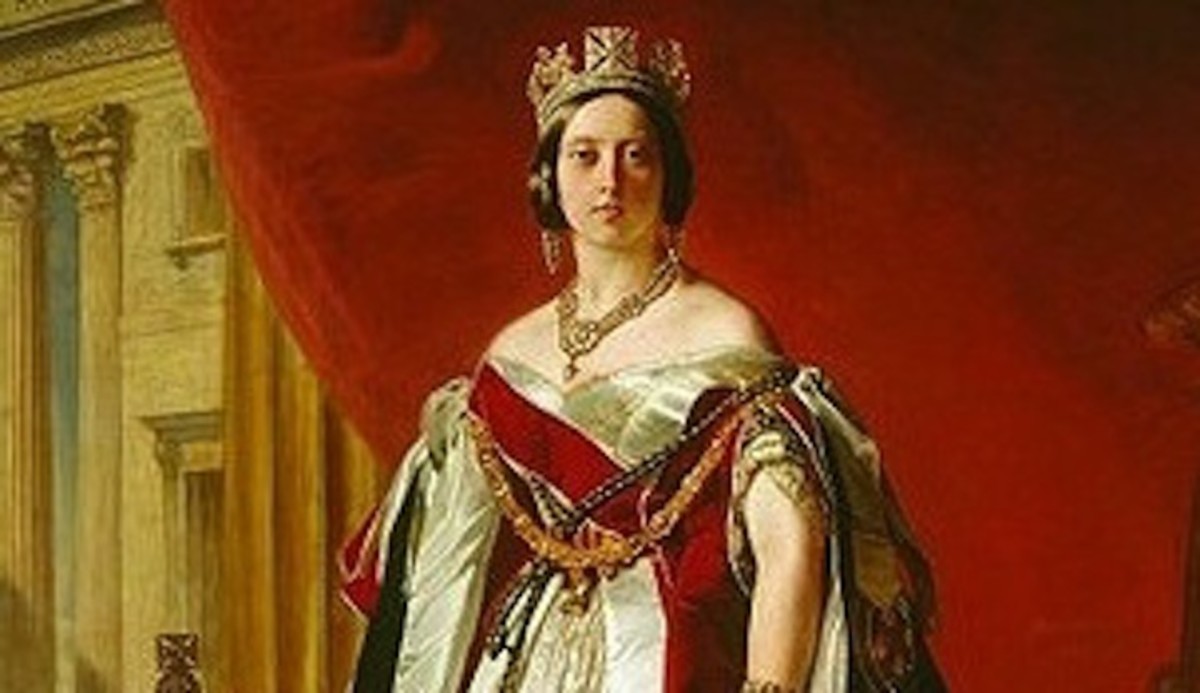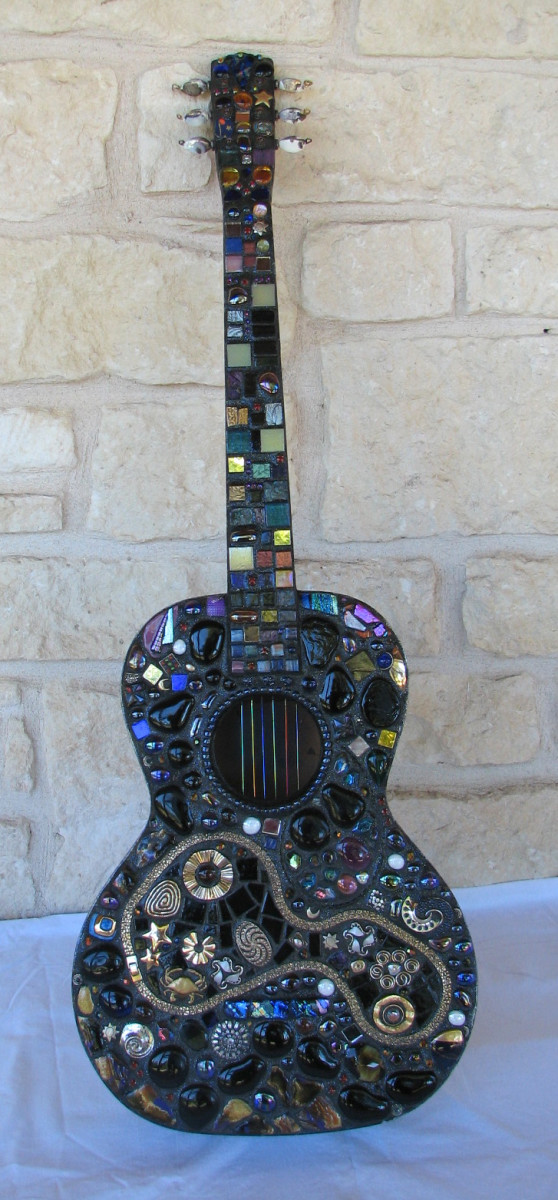The History of Feng Shui
Fountains are some of the most powerful Feng Shui cures - but only if they're in the right place!

What is Feng Shui?
Feng Shui is an ancient method of constructing and optimizing residences to bring about happiness, abundance and harmony. It includes architecture, urban planning, interior design, garden design, and placement of objects in our environment. It also involves the layout, framework, materials and colors of building structures.
These rules of thumb allow us to make the most ideal arrangement in any given situation.
Create an indoor oasis

Guarded Secrets
In ancient China, farms and villages were auspiciously placed within the protective folds of mountains, shielded from harmful winds and nurtured by the gentle, winding streams. The people who practiced these principles prospered in agriculture and trade and grew strong and powerful. They produced social, cultural and military leaders unlike their neighbors who were exposed to harsh winds and inhospitable terrain.
The art of Feng Shui was refined over many centuries, producing an abundance of learned scholars.Traditionally, Feng Shui was considered a highly guarded secret of the Chinese Imperial Court. All Feng Shui Masters were forbidden to release their potentially powerful knowledge to outsiders. The practice of Feng Shui was considered so powerful that it would be devastating in the hands of the enemy.
Consequently, knowledge was handed down from father to son within family traditions. The turbulent history of China has only helped to reinforce this tendency and this secrecy often continues, even today.
Magic Squares and Turtles

The Lo Shu Turtle crawls out of the River Lo
Chinese literature dating from as early as 2800 BC tells the legend of The "Lo Shu Magic Square" or "scroll of the river Lo". Roughly 3,000 years ago in ancient China, a great flood happened. The people, sensing that the river god ("Lo") was upset, tried to offer sacrifices to calm his anger. Each time they made an offering, a turtle would appear from the river. It had a curious figure/pattern on its shell; there were circular dots of numbers that were arranged in a three by three nine-grid pattern such that the sum of the numbers in each row, column and diagonal was the same: 15. This number was also equal to the number of days in each of the 24 cycles of the Chinese solar year.
This pattern, in a certain way, was used by the people to control the river. After studying these markings the people realized the correct amount of sacrifices to make - 15 - and consequently, the river god was placated.
This pattern is called a "magic square", in that each column and the two diagonals add up to the same number. The legend of the Lo Shu Turtle is told in The Book of Rites, one of the five classical texts of ancient China.
Fu Xi - from Turtles to Trigrams
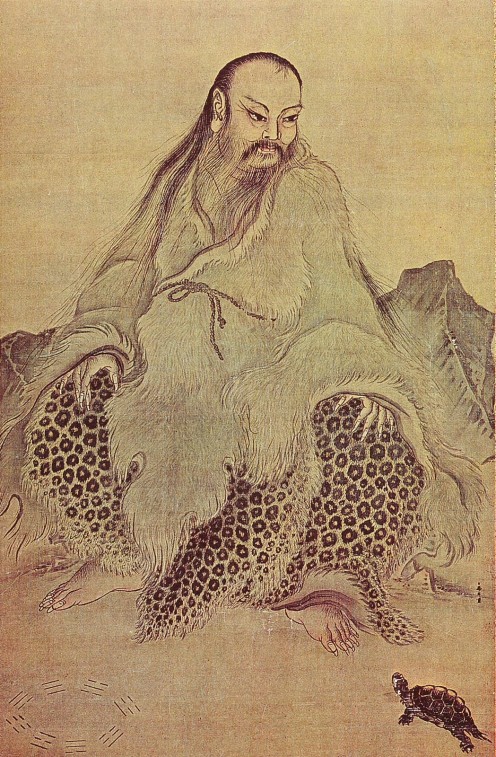
Fu Xi was the first of three noble emperors
Fu Xi was the first of three noble emperors, the San-huang, in Chinese mythology. According to tradition he ruled from 2952 to 2836 B.C. (116 years). Fu Xi taught many arts, such as the use of fishing nets, the breeding of silk worms, and the taming of wild animals. He also proportedly invented music, and, most importantly, the eight Trigrams (BaGua), which is used as a template for Feng Shui. Fu Xi is said to have invented the 100 Chinese family names and decreed that marriages may only take place between persons bearing different family names.
Fu Xi's most original invention is the development of the eight trigrams that order the world according to eight principles: Sky, Earth, Thunder, Mountain, Water, Fire, Marsh and Wind. These trigrams represent an abstract vision of the world and its changes. Each trigram results from another by the change of only one line, and the knowledge of the essence of these changes enables the user to learn more about themselves and the environment.
For more background on Trigrams and the Bagua, please refer to the "History" section of our Website:
The Pre-Heaven Bagua
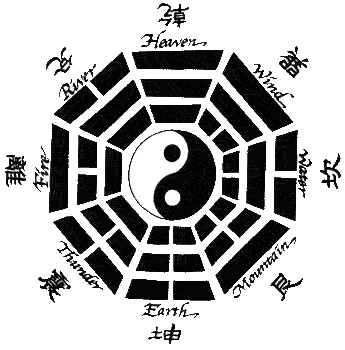
The Pre Heaven Sequence or Xian Tian BaGua
This is the formation of Trigrams produced by Fu Xi in 3300 B.C.. It bears a striking resemblance to many ancient symbols including Sanskrit and the Native American medicine wheel. It is a perfect model of harmony and unity and displays the natural way of life on our planet.
Look at any one Trigram, and follow the arrow to its complete opposite to see a natural model of yin and yang. The BaGua shows us how things reach their peak and then change to their complete opposite. Each hexagram represents a description of a state or process. Each of the yin or yang lines will be indicated as either moving (that is, changing), or fixed (that is, unchanging).
Moving (also sometimes called "old", or "unstable") lines will change to their opposites, that is "young" lines of the other type -- old yang becomes young yin, and old yin becomes young yang. This concept has formed the basis of Chinese philosophy, I Ching and Feng Shui. For easy identification the Trigrams still have their hosts or Trigram leaders and this shows us the active part of the Trigram.
For more on all of this, see:
Original text from the I-Ching
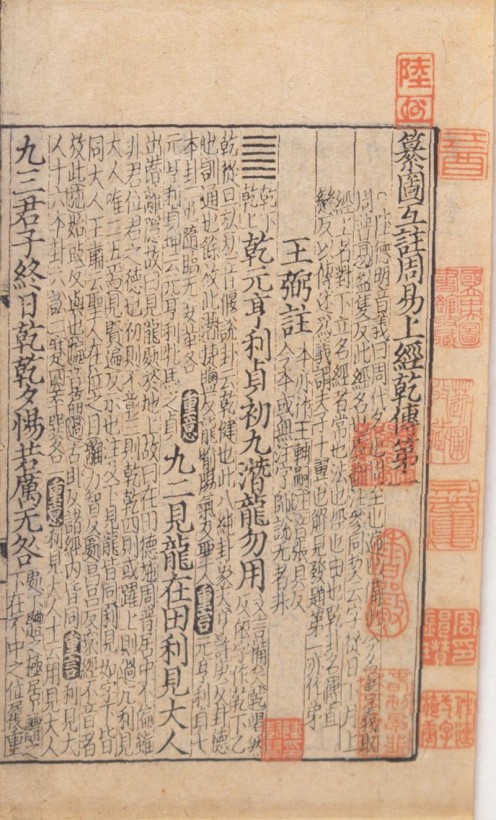
The I Ching (or Yi-Jing)
The Book of Changes, or Yi Jing (known in the West as I-Ching), is China's oldest philosophical text. Its origins are lost in the mists of time, but scholars believe the first compilation was done early in the Zhou Dynasty (1022 BC to 256 BC). Based on a divination system using the eight trigrams (groups of solid and broken lines), permutations of 64 pairs of trigrams were worked out. Over the ages short, memorable commentaries were added. For example:
"Lü / Treading [Conduct]
Above CH'IEN THE CREATIVE, HEAVEN
Below TUI THE JOYOUS, LAKE
TREADING. Treading upon the tail of the tiger.
It does not bite the man. Success."
The Book of Changes charts the movements and developments (hence, 'changes') of all the phenomena in the universe. Many regard it as a complete system of philosophy in itself. Emperors, statesmen and generals throughout Chinese history consulted it.
Revered by Confucius, the Book of Changes was included in the five classic texts of Confucianism. It was one of the few books spared when Emperor Qin Shi Huang (259-210 B.C.) ordered the burning of previous dynasties' works. The Illustrated Book of Changes is a venerable classic made available to readers of modern Chinese and English. The 64 hexagrams and their traditional commentaries are explained with illustrations, and the Chinese text has been written by leading calligraphers.
These five classic texts have spawned not only Feng Shui, but Tai Chi, Chi-Gong, Acupuncture, and other philosophies and sciences.
The I Ching is one of the primary sources for the calculations of Feng Shui. If you look at a Chinese Luo Pan Compass, the I Ching characters appear to denote the Trigrams. The odd numbers are illustrated by white "sticks" and the even numbers by black "sticks".
For extensive background and detailed description of the I Ching, please see:
Beautiful Buildings Blog

The Luo Pan, or Chinese Compass

The Chinese Compass (Luo Pan)
About 1,600 years ago, the Chinese had already determined that there were invisible forces at work beneath the earth. These were later confirmed to be magnetic forces. The Chinese believed these forces were positive (Yang) and negative (Yin) and developed a luopan compass to measure them.
Luo means a net that encompasses everything and Pan means utensil or plate. This allegorically refers to the union of Heaven and Earth and specifically to the electro magnetic field that holds all matter together.
Ancient China gave the world several of the mathematical and scientific concepts we take for granted today, such as the compass. The magnetic compass was invented in China for use by Feng Shui practitioners. It was adapted from the "south pointing spoon," or Si Nan. Because of variations over time in the earth's magnetic fields, three compass systems were superimposed over each other during the span of half a millennium to establish the compass that Feng Shui practitioners use today.
The origin of the compass
The original magnetic compass used for navigation was constructed in the seventh or eighth century with the needle floating in water. The true north-south meridian was first set down by Chiu Yun Han (c. 713 - 741 A. D.) and known as the Cheng Chen. This was used until roughly 880, when readings were so far off the mark that immediate correction was required. In the eight or ninth century it was further refined with the discovery of magnetic declination. Yang Yun Sang added specialized compass points to compensate for the variation. The Feng Chen or "seam needle" fixed the Cheng Chen's variations. The compass was again adjusted in the 1100s when Lai Wen-Chun came up with the Chung Chen (the central needle). Chinese people used compasses for centuries prior to even the most rudimentary ones on European ships. As late as the seventeenth century, all Western compasses still pointed south just like the ancient south-pointing spoons they were built to imitate.
The Verboten Secret
During the Cultural Revolution (1966-1969), the old ways came under scrutiny once more. While traditional medicine received official sanction from the government, Feng Shui did not. It was eventually outlawed. Ironically, since many Chinese leaders owed their rise to power to Feng Shui, they purposely kept Feng Shui texts hidden from the masses. Today, what little Feng Shui survives in China is under strict control of the Communist government.
Pets are great Feng Shui!

In Summation: Yin and Yang
The Chinese believed that there were energy forces (Chi) in the body as well as the universe. They believed that there must be a balance between the Yin and Yang aspects of this energy in the body, for perfect health, and in the earth, for growth. Feng Shui is the art of detecting the Chi in a room, building, or site, and regulating it for results. The benefits of Feng Shui were once restricted only to the rich and powerful in China, but are now becoming widely available. Simply put, proper Feng Shui will make you feel fabulous in your home or office.
Animals are great at activating Chi. People who have pets are improving their Feng Shui, just by having the pets moving about in their home.
Feng Shui is largely common sense. For example, it just feels better to have your back to a wall and see the door in your office. To have your back to the door, you tend to feel anxious that someone will sneak up on you. This makes you less productive. This is also why in a restaurant, men prefer to take the seat against the wall, looking out, with a view of the widest expanse of the room. They instinctually feel more able to protect their partners in this position. They are also safe from attack, which undoubtedly hearkens back to hunting and gathering days.
Feng Shui intuition runs very deep, and we all feel it. Knowing how to manipulate it is another matter. It is about taking care of a myriad of rules and details like this, in your home or office, which all add up. The overall effect can be improved dramatically by using these rules to adjust your furniture, objects, colors and materials. Once you learn about Feng Shui, you will never see the world the same way again.




